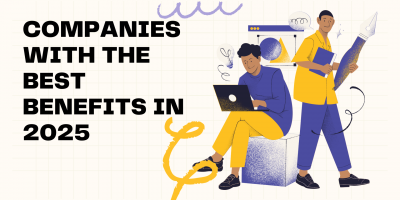
What are the Social Determinants of Health?
Could your zip code, income, and job be more crucial to your health than your genetic code? Explore the unexpected ways social determinants shape our well-being.

Can the design of an office space boost the health and productivity of its employees?
According to a comprehensive American Society of Interior Designers (ASID) study, workplace design positively influences health, wellness, employee satisfaction, and work performance.
The research highlighted improvements in environmental quality, environmental satisfaction, and employee retention, demonstrating how office design can shape the environment to boost performance and productivity.
The psychological impact of office design is profound, influencing employees’ mood, stress levels, and overall mental well-being. For example, color schemes, natural lighting, and the presence of plants can significantly affect employees’ psychological state.
Natural light has also been shown to boost mood and energy levels, thus maximizing productivity. Exposure to natural light enhances mood, reduces eye strain, and positively affects circadian rhythms, improving sleep quality and productivity.
Similarly, green spaces within the office can reduce stress and promote employees’ well-being. The Green Plants for Green Building’s research on how indoor plants impact the workplace suggests that incorporating biophilic elements, such as plants, in the office can lead to a 12% increase in productivity and a 19% improvement in concentration.
Additionally, introducing elements of nature into the workplace has been shown to enhance creativity and well-being by 15%.
Furthermore, the office layout, whether open-plan or segmented into private spaces, can also influence social interactions, facilitate collaboration, or provide the solitude necessary for deep work.

The aesthetics of an office go beyond mere decoration.
A well-designed office reflects professionalism and can instill a sense of pride and belonging among employees, highlighting the company’s values and ethos.
Moreover, functionality intertwined with aesthetic appeal ensures that the workspace is visually pleasing and meets the workforce’s practical needs.
Ergonomic furniture, accessible design, and intuitive spatial arrangements, for example, can contribute massively to a seamless work experience, reducing physical strain and minimizing wasted time, thereby directly enhancing productivity.
The modern workforce’s design emphasizes flexibility and personalization.
Flexible workspaces that accommodate different work styles and tasks can significantly boost efficiency. Personalization, on the other hand, allows employees to adjust their immediate surroundings to suit their preferences, offering an enhanced sense of control and comfort.
This concept of adaptability caters to the diverse needs of individual workers and fosters a work culture of deepened respect and inclusivity.
Another critical aspect of office design is balancing spaces for collaboration with those designed for individual concentration. While collaborative spaces encourage teamwork and the free flow of ideas, quiet zones are essential for tasks requiring focus and concentration.
Ultimately, the challenge lies in designing an office that supports both needs in a balanced, harmonious way. For example, innovative solutions, such as acoustic panels and flexible partitioning, can create an environment where employees can seamlessly transition between collaborative and solitary work modes.
In an era dominated by digital technology, integrating tech-friendly designs is essential. Smart offices equipped with the latest technology not only streamline work processes but also enhance employee engagement and satisfaction.
When thoughtfully incorporated into the office design, features such as wireless charging stations, smart lighting, and temperature control systems can create a more efficient and enjoyable work environment.

The future of office spaces is reshaped at the intersection of technology, design, and ergonomics – a convergence not just about enhancing aesthetic appeal or comfort but a holistic approach that considers how these elements can collectively foster environments conducive to productivity and well-being.
Advanced technologies like automated climate control and lighting systems simulate natural environments, while ergonomic furniture supports physical health. Altogether, these innovations signify a comprehensive approach to office design, promising workplaces that inspire creativity and promote a sustainable and health-focused working culture.
The design of an office is much more than an aesthetic consideration – it’s a strategic tool that can significantly impact employee productivity and satisfaction.
Ultimately, by prioritizing psychological comfort, functional aesthetics, flexibility, and technological integration, organizations can create workspaces that not only meet the practical demands of daily tasks but also inspire and motivate their workforce.
Browse our curated list of vendors to find the best solution for your needs.
Subscribe to our newsletter for the latest trends, expert tips, and workplace insights!

Could your zip code, income, and job be more crucial to your health than your genetic code? Explore the unexpected ways social determinants shape our well-being.

In 2025, employee detachment is quietly draining workplace energy. Explore how leaders can step in to re-engage their teams, reignite motivation, and rebuild a sense of purpose.

Gain vital time and attendance insights to manage workforce punctuality and productivity effectively.

Which companies are leading the way in 2025 with benefits that go beyond salaries to truly support employees’ health, finances, and work-life balance?
Used by most of the top employee benefits consultants in the US, Shortlister is where you can find, research and select HR and benefits vendors for your clients.
Shortlister helps you reach your ideal prospects. Claim your free account to control your message and receive employer, consultant and health plan leads.